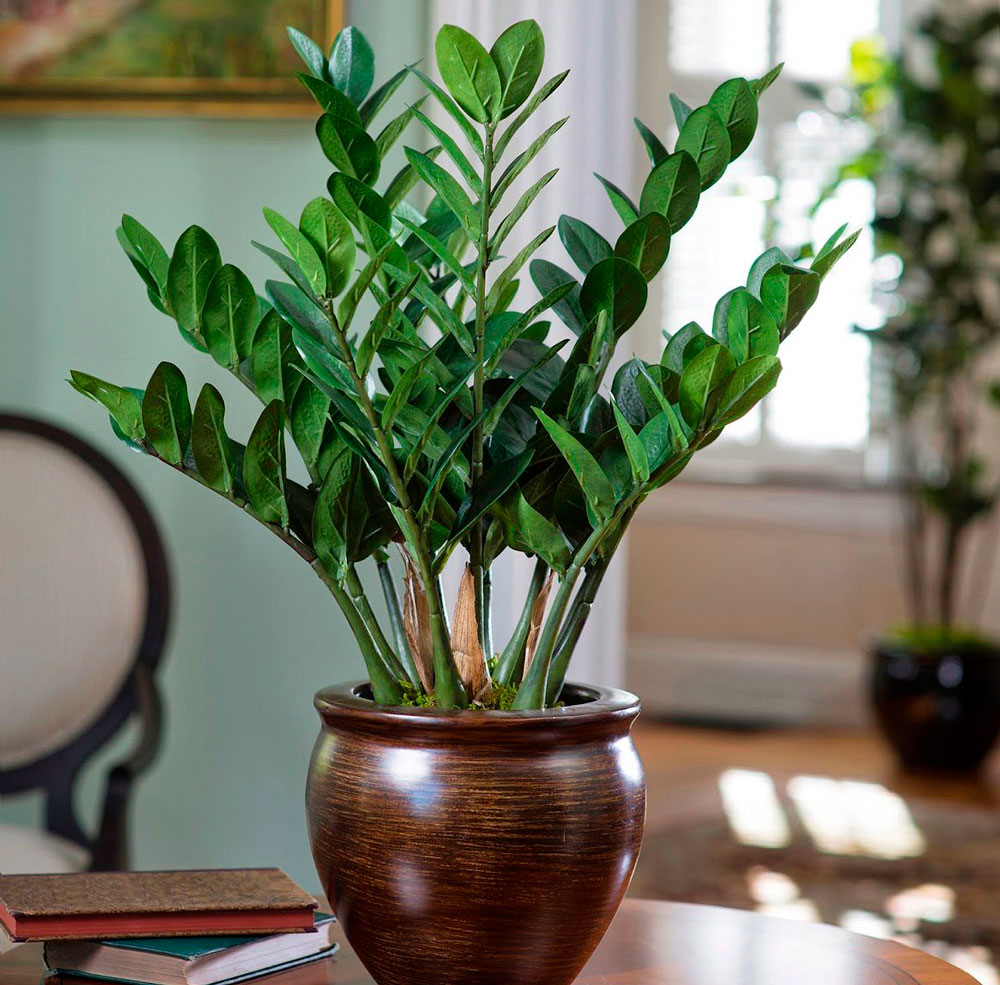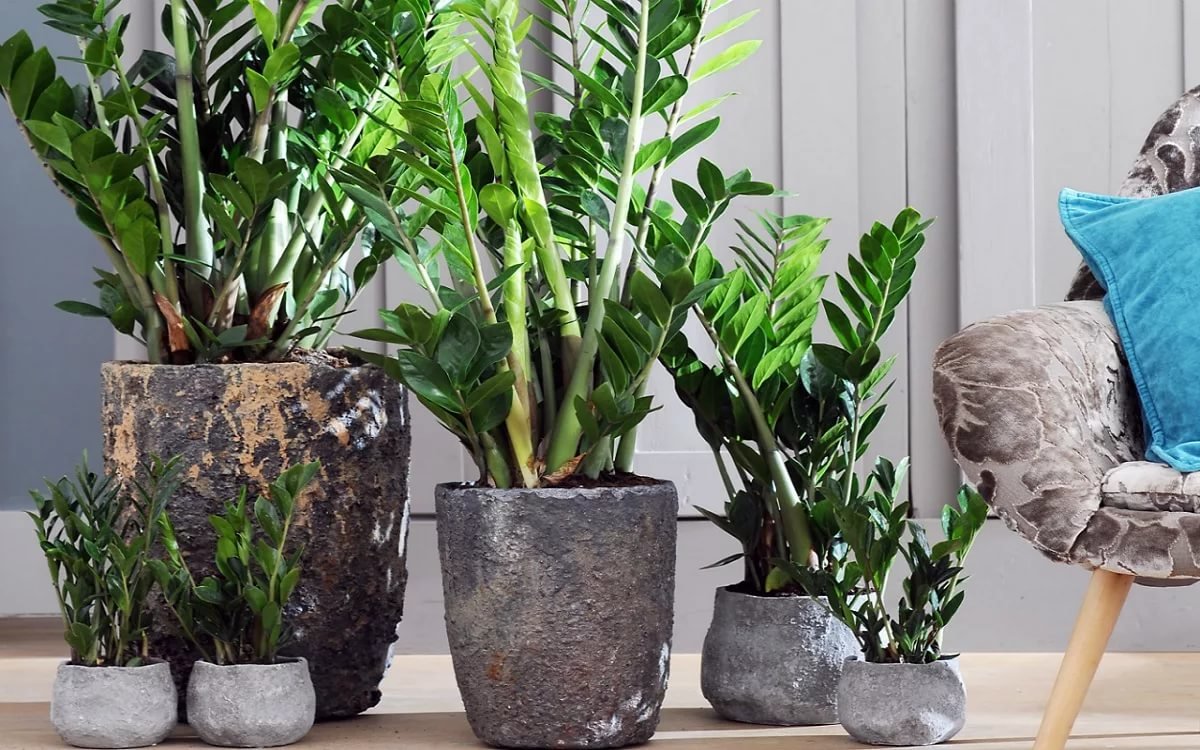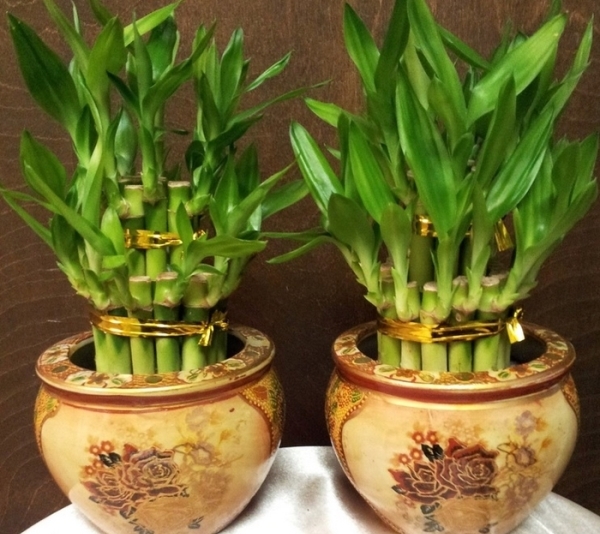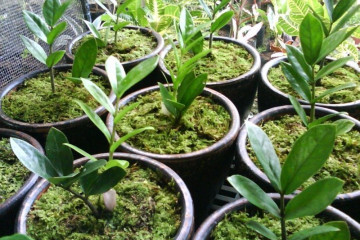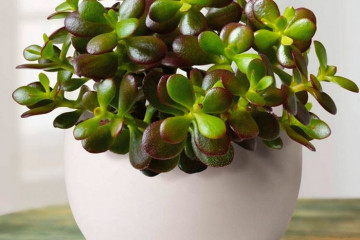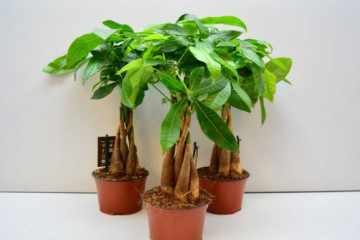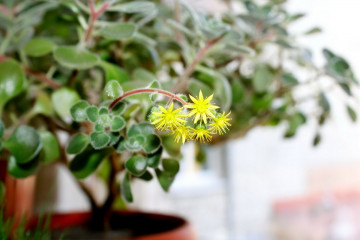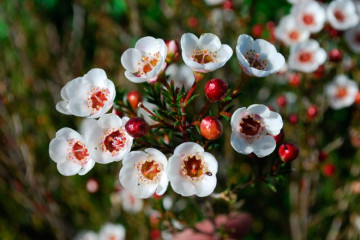Zamioculcas - home care
Content:
The plant zamioculcas of the Aroid family fell in love with flower growers and phytodesigners for its spectacular appearance and unpretentious care, perfect for landscaping offices. The culture feels comfortable in hot and cool rooms, does not require spraying, takes root in any soil, it is not necessary to feed an exotic flower.
Home care
Lighting
Zamioculcas is placed in an area of abundant lighting; with good care, the zamioculcas flower will quickly take root on windows of various directions. The northern side deserves special attention. Lack of light during the period of culture development threatens to weaken the shoots, the color of the leaves will be less saturated.
Watering
Water the zamioculcas flower as the soil dries out. Excess moisture often causes root decay. As a succulent, the celibate tree easily tolerates prolonged droughts. Leaving on vacation or a business trip for a week, the owners of the flower do not have to worry about the pet's condition.
Humidity
Bushy perennial prefers dry air, adapts well in city apartments. However, excessive dryness of the air is possible during the heating season. Caring for a dollar tree at home in winter requires wiping the leaves with a damp cloth.
Content temperature
The money tree is a heat-loving plant, + 18 ... 26 degrees - the optimal temperature range for the perennial zamiokulkas home care does not allow falling below +15 degrees. The culture easily tolerates heat, on hot days it is useful to spray the dollar tree.
Zamiokulkas transplant
The dollar tree, even in a favorable and comfortable environment, develops slowly; often there is no need to replant the variety. The first time a houseplant is placed in a new pot after purchase, then as the culture grows and the rhizome grows. A young individual will need to be transplanted after the first year of life; flowerpots are renewed for adult crops every 2-4 years.
The succulent plant has a sensitive root system. The tuber-like stems and roots remain underground. The roots extending from the tubers are quite fragile; it is undesirable to touch them when transplanting.
Soil for planting
When choosing a soil for planting, reproduction of zamiokulkas, it is important to take into account the ability of a culture to accumulate water by roots and natural growth conditions. It is better to plant the plant in loose soil that is not overloaded with nutrients. High demands are placed on air permeability, the oxygen deficiency experienced by the roots is excluded.Acidity for an exotic plant is neutral.
Among the ready-made substrates for planting a tropical culture, preference should be given to soil for succulents, supplementing the composition with a baking powder in the form of brick chips, vermiculite or drainage of fines. The recommended composition can be made independently by mixing equal proportions:
- turf land;
- leafy land;
- peat;
- coarse sand.
A good addition to the composition will be charcoal seed - the material absorbs excess moisture, preventing the development of pathogenic fungus. Growing a succulent plant in heavy clay-containing soil will not work. The water will stagnate, the roots will suffer from a lack of oxygen. It is advisable to disinfect the soil in an oven or freezer. High and low temperatures are detrimental to pests that provoke flower diseases.
Pot
When choosing a pot for zamiokulkas, you should consider a number of simple recommendations.
Zamiokulkas flowers with massive, densely growing trunks feel great in wide flowerpots. In adult plants, the rhizome is well developed, the tubers reach large sizes. Young individuals have thin shoots with small tubers and poorly developed roots. The pot is chosen according to the size.
Having decided to plant a succulent in a deep container, the flowerpot will accommodate more substrate than the flower requires. Water consumption for irrigating the soil will also increase, the root system will begin to suffer from waterlogging.
The container for the plant should contain drainage holes to ensure that excess moisture is utilized and that the required water level is consumed.
The preferred material for the pot is plastic or clay, with peat and coconut fiber options commercially available. Why it is worth giving preference to the latter is easy to guess - the reason is justified by good ventilation of the soil and removal of water.
How to feed zamiokulkas
Interested in how to care for zamiokulkas to obtain the maximum size of leaves and shoots, you should stock up on fertilizers:
- nitrogen, which has a positive effect on the parameters and color of leaves, the length of the shoots;
- potassium, which stimulates flowering;
- phosphorus, which accelerates the growth and development of the root system.
Nitrogen fertilizers are the main nutritional component of zamiokulkas. The leaves of the flower are dense, dark green, with a high content of chlorophyll. Its formation is facilitated by nitrogen from the air and soil.
The use of dressings of various origins is allowed: organic and mineral. At home, dry manure in granules is suitable, allowing you to feed the culture in early spring until the end of summer (once every 2 weeks). Breaks allow soil bacteria to process organics and release nutrients to the root zone.
How to form a zamioculcas
Pruning zamiokulkas contributes to the formation of the crown of the plant, improving illumination, while removing yellowed, diseased or bare branches. The procedure is carried out during the period of active growth, in spring or summer. Pruning a crop in winter, during a dormant period, often causes weak and pale leaves, a deterioration in the appearance of the plant.
It is advisable to prune the crown when new branches grow up, and not to the side. To shape the ball, pinch off the top bud and side leaves. In the future, it is necessary to control the uniform development of branches.If one stands out in growth and size, it is removed. The remaining parts of the culture will receive adequate nutrition, the zamioculcas will acquire a decorative appearance.
Plant rejuvenation
In addition to formative pruning, rejuvenation of the culture is carried out by removing old branches that have lost their decorative appearance and sticking out hemp, from which leaves have long ceased to grow, during transplantation.
How to trim
All parts of the perennial are subject to pruning: roots, leaves in cuttings and individual plates. A small, sharp pruner or a short knife can reduce the risk of tissue injury. The pruning site is dried, preventing access to open vessels of pathogenic microbes. Sprinkle large cuts with crushed coal.
Growing problems
Zamioculcas falls apart
Growing up, large and long leaves of zamiokulkas fall apart in different directions. A ring support will help to avoid the situation. The need arises when growing large specimens at home over the age of 5-7 years.
Yellowing of leaves
The yellowness of the leaves is caused by natural causes (with the formation of young leaves with the simultaneous fall of old ones) and improper care. Usually, the leaves begin to turn yellow with abundant watering and stagnation of moisture in the water. An excess of fertilizer leads to decay of the root system. Often, for more intensive growth, flower growers prefer to feed the plant with fertilizers. Leaves can dry out from temperature changes. The dollar tree does not tolerate drafts.
Zamioculcas Black
Zamioculcas Black is a rare exotic plant native to Madagascar. The flower grows up to one and a half meters in height. It blooms rarely. It is unpretentious in leaving. Air humidity and soil type do not really matter. Zamioculcas black prefers the shady side, direct sunlight threatens the formation of burns on the leaves. The ideal place is a window sill on the north side of the apartment with good air ventilation. A loggia, a balcony, an attic, a veranda will do.
Zamioculcas Zenzi
Often zamioculcas Zenzi is looked after as a typical plant of the Aroid family, ignoring the flower's peculiarity - the ability to store moisture for future use. The tubers, the thickened petiole below and the fleshy leaf axis serve as accumulators of the flower liquid. With a small size, the plant suffers from frequent watering and spraying: the leaves turn yellow and fall, the tuber rots. It is important to maintain moderate humidity and patiently wait for light drying of the soil in the pot. It is useful to periodically wipe the leaves with a damp sponge to remove dust.
Proper care is a guarantee of the growth of a healthy and effective specimen of zamiokulkas.
